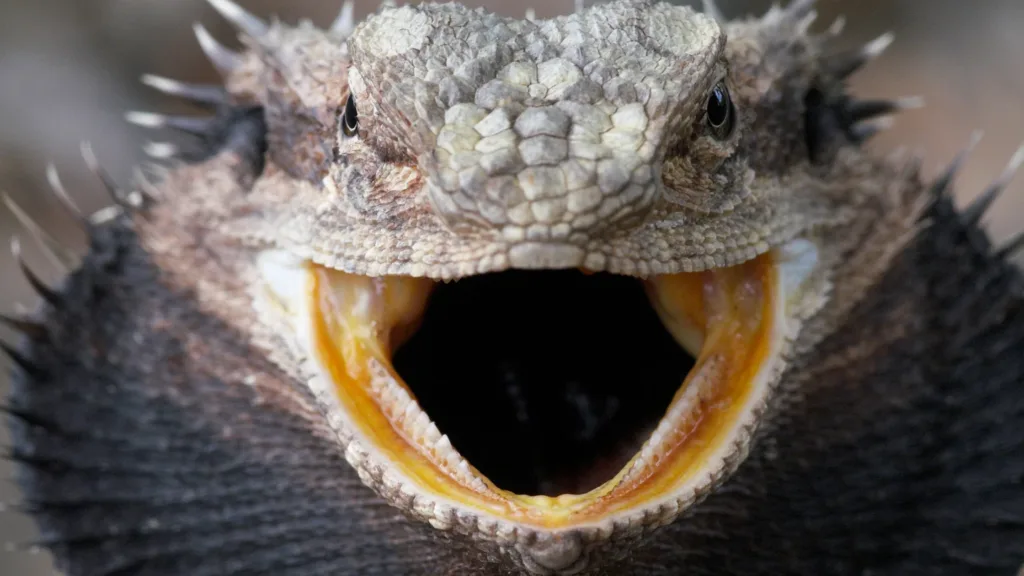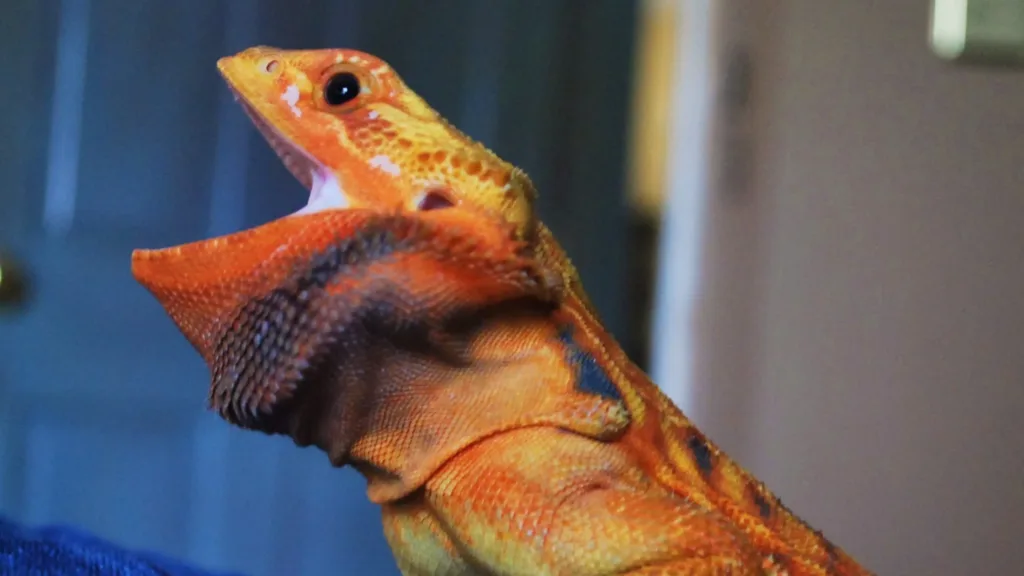Bearded dragons are native to Australia and currently considered one of the beginner-friendly reptiles. But in the 1960s, the Australian government banned their export. They have bred them in the USA and Canada since then. In other words, most of the bearded dragons in the world right now aren’t native to Australia.
Fun fact: They are also easy to care for. You can find all the information related to bearded dragons here. But what are some fun and weird facts related to bearded dragons? Well, read on to find out!
Fun Fact Related to Bearded Dragon
1. Bearded dragons can be born with two heads – a condition called bicephalism. They can also be born with small or even no eyes.
2. Some bearded dragons have both female and male organs. This is called hermaphroditism. Bearded dragons with this condition are infertile.
3. Female bearded dragons can lay eggs even without being fertilized. Their eggs are called clutches.
4. Female bearded dragons can lay almost 11-30 eggs in a year.
5. Heads of male bearded dragons are bigger than female bearded dragons.
6. If the incubation temperature where bearded dragon’s eggs are placed is more than 31°C, then sex reversal happens. Male genotypes express female genotypes and vice versa.
7. The male bearded dragon’s bite force is higher than that of females.
8. Adult male bearded dragons are more aggressive than baby male bearded dragons.
9. Any male bearded dragon entering another male bearded dragon’s territory can be considered as a predator by the latter.
10. Male bearded dragons can even attack female bearded dragons if they don’t show submissive signs like hand waving.
11. Bearded dragons brumate when temperatures are warm. When temperatures become too hot, they burrow underground.
12. More than 900 bearded dragons are present in zoos around the world.
13. Bearded dragons can’t recognize standing water as water. That’s one reason they can quickly become dehydrated.
14. Bearded dragons can go without water for 3 days.
15. Beardies tail is half the size of its body.
16. Contrary to popular belief, bearded dragons don’t drop their tails. But they can get tail rot because of improper handling.
17. Bearded dragon’s teeth aren’t attached to their sockets. They are loosely attached to their jawbone.

18. Male bearded dragons are larger in size than female bearded dragons.
19. Male bearded dragons have hemipenal bulges on the ventral side of their tail base. Female bearded dragons don’t have this. Male bearded dragons also have larger and more prominent femoral pores than female bearded dragons.
20. Bearded dragon’s mucous membrane in the oral cavity is yellow in color.
21. Bearded dragons mark their territory by leaving a thick, waxy liquid that secretes from their femoral pores.22. Bearded dragons are reptiles that shed in patches. Their skin is scaly.
23. They can drink water for straight 20 to 30 minutes.
24. Beardies store water on their heads.
25. Female bearded dragons can store sperm for later use.
26. Female bearded dragons show dominance by head bobbing.
27. Bearded dragons can change the color of certain parts of their bodies. Their beard turns black during mating.
28. Beardies can sleep while standing on a rock.
29. Adult bearded dragons have 80 teeth in their mouths.
30. Bearded dragons are lazy reptiles but at times, they can run with a speed of 9 mph.
31. Bearded dragons don’t pee; instead, they release uric acid, which is basically white powder.
32. They have a parasite called pinworms living in their GI tract.
33. Bearded dragons don’t like sweet flavors; they love the nutty and earthy flavor of crickets.
34. Male bearded dragons are more territorial than females.
35. Both female and male bearded dragons’ beards turn black when they are stressed or angry. Male bearded dragons’ beards are darker than female ones.
36. Male bearded dragons show interest in mating by bobbing their heads up and down.
37. In the wild, bearded dragons can live up to 5 to 8 years. But in captivity, they can live for 12 to 18 years.
38. Bearded dragons are called bearded dragons because of the spikes on their necks.
39. When bearded dragons are born, they are only 3 inches long.
40. Bearded dragons have three eyes. Their third eye is located on their head.
41. Bearded dragons can see what’s behind them, thanks to their third eye.
42. There are 8 different bearded dragon species in the world.
43. They open or gape their mouths when they feel hot.
44. When they get bored, they start glass surfing.
45. Bearded dragons can swim; their swimming is similar to that of a crocodile.
46. Bearded dragons aren’t poisonous, but they are venomous. Their venom can paralyze small bugs.

47. Bearded dragons don’t have a beard; they are called bearded dragons because of the scales around their necks.
48. Bearded dragons turn black while mating.
49. Male bearded dragons have two reproductive organs that are placed on the vent. These organs are called hemipenes.
50. Through licking, bearded dragons explore their environment.
51. Unlike humans, bearded dragons have three chambers in their heart.
52. Bearded dragons don’t have a diaphragm. The muscles placed between their ribs help them in breathing.
53. Adult bearded dragons can reach up to 18-22 inches.
54. There are more than 22 morphs of bearded dragons in the world.
55. Color variation of bearded dragon varies from tan to dark brown to bright orange.
56. Bearded dragons don’t pee liquid urine. They have a cloaca which collects waste that empties externally through vents.
57. Depending upon environmental conditions, bearded dragons can adjust their uric acid production to prevent dehydration.
58. Bearded dragons are diurnal reptiles, meaning they are active only during the day.
59. They can weigh upto 10 to 18 ounces.
60. Bearded dragons’ natural habitat include deserts, subtropical woodlands, savannas and shrublands.
61. When bearded dragons are threatened, they open their mouths, raise their chin and puff out their beard.
62. If a bearded dragon is quickly head bobbing then that means they are showing dominance. Contrarily, slow head bobbing along with arm waving means submission.
63. Bearded dragons use the sun’s ultraviolet light to produce vitamin D.
64. They normally don’t bite. They bite when they feel threatened.
65. Bearded dragons can mate throughout the year. But usually after brumation, male bearded dragons go out to find mates.
66. Sexual maturity in bearded dragons are achieved when they turn 8 to 12 months of age.
67. Their eggs take 60 days to hatch.
68. Bearded dragons can discern illusion. A study done by the University of Padova found that when bearded dragons are given food in small and large plates with the same amount of food, most of the time they pick small plates.
69. Bearded dragons having shistosomus have organs outside their body.
70. They change their color to mix in their surroundings.

